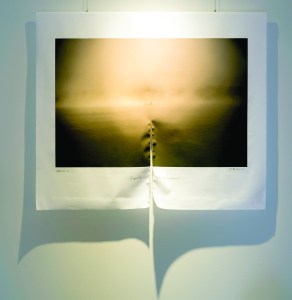Inclusiveness hallmark of upcoming CityMusic Cleveland concert series
By Carlo Wolff
CityMusic Cleveland will perform its first concert series of 2018 starting March 14 with a decidedly ecumenical series featuring works by both Jewish and Muslim composers. The idea, said CMC music director Avner Dorman, is to highlight what binds those cultures, not what divides them.
The free concerts will feature music by accordionist Merima Kljuco, a Croatian Jew who delivered a notable presentation in Cleveland in fall 2015; Tom Cohen, a Jew who runs an Andalusian orchestra in Israel and writes essentially Arabic music; Behzad Ranjbaran, an Iranian native who lives in New York City; Josef Bardanashvili, a Jew who lives in Israel; and Damascus-born Kareem Roustom, a child of Syrian and American parents.
Kljuco and pianist Seth Knopp delivered a moving multimedia presentation, “The Sarajevo Haggadah: Music of the Book,” Oct. 28, 2015 at the Cleveland Museum of Art. Geraldine Brooks, the Australian author of “People of the Book,” a historic novel about that manuscript, introduced Kljuco. Brooks will not attend these mid-month Cleveland-area shows. But Kljuco will, soloing with the 40-piece chamber orchestra in a greatly expanded arrangement of the much leaner work she presented at CMA.
The other key idea, and part of CityMusic Cleveland’s mission, was to present this concert at various kinds of institutions and religious outposts, from Anshe Chesed Fairmount Temple in Beachwood to St. Mary Parish in Elyria, with a stop at a public library along the way. A variety of locations is critical, Dorman said.
Sarah Sager, cantor at Fairmount Temple, will deliver remarks about the Kljuco piece at the orchestra’s series premiere March 14. This concert series, which runs from March 14-18, is the third series in the chamber orchestra’s 2017-18 season.
The Sarajevo Haggadah is a hallowed Jewish holy manuscript that since its creation in 1350 has traveled from its Spanish origin to Sarajevo; during World War II, a Muslim cleric there hid the iconic artifact under a mosque’s floor boards. “The story of the Sarajevo Haggadah … is the story of a single book over five centuries,” Sager noted.
Kljuco’s musical interpretation of the Sarajevo Haggadah stands on its own, Dorman said.
“I think the way she expresses the story is very direct, very moving,” he said. “She expresses a broad range of emotions. It goes from devotion and closeness, to prayer, to very scary, very dramatic moments.
“She did a very interesting thing in which different instruments in the orchestra relate to different characters, different elements; it’s almost like in an opera or film, where you have specific elements in the orchestra relating to specific emotions. It brings the story to your heart very directly.”
Does the Kljuco work speak especially eloquently in light of the current cultural and political climate?
“The atmosphere in the world now is more divisive and negative, and the Muslim ban is one example,” said Dorman, name checking a prominent, controversial policy of the current presidential administration. The CityMusic Cleveland program “gets to touch on the connections, the common goals that all people and religions have, rather than focus on the divisions.”
“We are certainly witnessing, on many levels, an era of tribalism,” Sager said. “For me, this is unfortunate, as it represents a regression from the ideal of all human beings as equal and of infinite value. Tribalism ultimately posits that ‘our tribe’ is better than ‘your tribe.’ I find it difficult to imagine a world in harmony and at peace with that attitude prevailing.
“As a response to the disunion of humanity, I love the fact of the Sarajevo Haggadah and the idea that its survival represents a noble and enduring ideal of human cooperation, coexistence, and interconnected community.”
Eugenia Strauss, who helped found CityMusic Cleveland in 2004, said attendees will receive a special, 36-page program about the concert that goes into great detail about the Sarajevo manuscript, the first illustrated Haggadah.
“We’re trying to humanize these communities, we care about respecting other religions, and many people put their lives on the line to rescue artifacts from either religion,” said the orchestra’s executive director. “What we’re really addressing is the humanity of all the major religions; we’re trying to say everybody is a human being, everybody wants a job and a roof over their head, and wants to educate their children, help their communities.”
The music Dorman chose for this series is “incredibly accessible and beautiful,” Strauss said. “I’m getting phone calls asking, what kind of music is this? It’s beautiful music.”
CityMusic Cleveland Presents ‘Two Faiths: One Spirit’
WHEN: March 14-18
WHERE:
–Anshe Chesed Fairmount Temple, 23737 Fairmount Blvd., Beachwood, 7:30 p.m. March 14
–St. Jerome Church, 15000 Lake Shore Blvd., Cleveland, 7:30 p.m. March 15
–Cuyahoga County Public Library, 2121 Snow Road, Parma, 11 a.m. March 16
-Lakewood Congregational Church, 1375 W. Clifton Blvd., Lakewood,
7:30 p.m. March 16
–Shrine Church of St. Stanislaus, 3649 E. 65th St., Cleveland, 8 p.m. March 17
–St. Mary Parish, 320 Middle Ave., Elyria, 4 p.m. March 18
INFO: Free. Call 216-632-3572 or visit citymusiccleveland.org
Carlo Wolff is a freelance writer from South Euclid.
Originally published in the Cleveland Jewish News on February 28, 2018.




































































